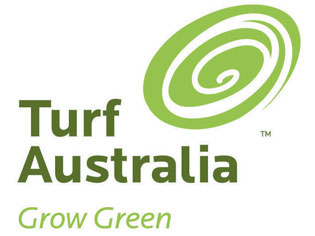LAWN ADDS VALUE TO HOMES
23 Feb 2012
A national survey has found Aussie home buyers are willing to pay up to $75k more for a lawn, with most interested in real grass and not the synthetic variety.

Aussie home buyers are prepared to pay up to $75,668 more for a lawn, according to a national survey of residential real estate agents.
The survey, conducted by Turf Australia, found Victorian lawns offer the highest value (19 per cent) to a home, ahead of New South Wales (16 per cent), Queensland and South Australia (12 per cent, respectively), and Western Australia (9 per cent).
In Sydney where the average house price is $440,000, a lawn could add $83,600 to the price, while Melbourne buyers could pay $79,800 more on an average home of $420,000.
A third of real estate agents say buyers believe a lawn adds to the look and feel of a home, while 73 per cent say buyers want a safe playing area for their children.
But it’s not only families who want a lawn, according to real estate agents; young couples and upsizers also believe in the benefits of grass, and a majority (80 per cent) of their buyers want a backyard to be at least 30 per cent of their total property size.
Janusz Hooker, Chief Executive of LJ Hooker, says house hunters factor in specific requirements such as a lawn or a backyard as part of their criteria and budget.
“Australians have changed their ideals for a backyard but a townhouse or larger suburban home with an area of grass is still important in 2012,” says Mr Hooker.
While agents believe 25 per cent of buyers are savvy about the long term benefits of a lawn, those selling need to also recognise the potential resale value of a lawn.
“For sellers, the key is to put some time into making the lawn look well-cared for and perfect for the new owners – that’s how they’ll capitalise on the added value a lawn can offer,” says Mr Hooker.
The survey also reveals that real estate agents believe a decent sized backyard is among the top three prerequisites for house hunters for 34 per cent of buyers, along with a quiet street (41 per cent) and more than one bathroom (42 per cent).
“It’s clear that Australians love the real stuff, with nine in 10 agents saying buyers feel their future backyard should be real grass, rather than less natural options such as pavers, synthetic grass, decking and concrete,” says landscaper, horticulturist and TV personality, Jody Rigby.
These comments follow recent media attention regarding nation-wide community concern regarding the potential dangers of rubber, lead and other carcinogenic toxins often found in synthetic turf (refer to the ODS E-News story published in last week’s issue: http://www.outdoordesign.com.au/article/Fake-grass-reconsidered/0777)
"Most residential varieties of turf, for both warm and cooler climates, are very hardy and can easily withstand constant summer fun and games. New types of grass are not as thirsty as many believe, and, of course, all have great environmental benefits,” says Rigby.
“It’s the Australian way of life to grow up running around in the backyard, and it’s not as hard as many think to keep a lawn looking beautiful and green, despite the kids’ wear and tear,” concludes Rigby.
Turf Australia polled 114 real estate agents nationally between November 2011 and January 2012 for the Value of turf national real estate agent industry benchmark.
About Turf Australia
Turf Australia is the representative body of the turf industry comprising over 200 levy paying turf producers and individual members Australia-wide. Turf Australia’s aim is to develop and foster the advancement and profitability of a sustainable natural turf grass industry. Turf Australia is committed to the environmentally responsible production, installation and maintenance of turf grass through training, information and development programs.
Visit www.turfaustralia.com.au

MORE NEWS

SHADING THE FUTURE

WARRAWONG MIXED-USE DEVELOPMENT MOVES FORWARD

HOW TO ENSURE YOUR DESIGN COMPLEMENTS THE SURROUNDING ARCHITECTURE

XI'AN'S CULTURAL DISTRICT TAKES DESIGN CUES FROM ITS CERAMIC HERITAGE

BUILDING GREAT SKATEPARKS FOR EVERYONE

